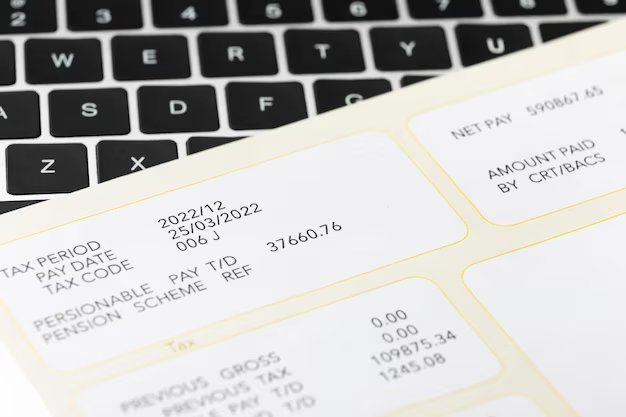Unlocking Value: A Complete Guide to Cashing In Your EE Savings Bonds
Have you discovered a stash of EE savings bonds tucked away in a drawer and are wondering what to do with them? You’re not alone. With millions of Americans holding savings bonds, cashing them in can seem confusing at first. The good news is, it's not as complicated as it may appear. This guide will walk you through the essentials, helping you turn those bonds into cash with confidence.
Understanding EE Savings Bonds
What Are EE Savings Bonds?
EE Savings Bonds are a type of non-marketable security designed for individuals to save money over the long term. Introduced in 1980, they are backed by the U.S. government, making them a low-risk investment. These bonds are typically sold at half their face value and mature over a period of 30 years, earning a fixed interest rate.
Why Cash In Savings Bonds?
Cashing in your EE Savings Bonds is a financial decision influenced by personal goals. Common reasons include funding education, reducing debt, or making significant purchases. It's essential to evaluate your financial situation to decide whether cashing in is the best option for you.
Tip: EE Bonds mature over 20 years, earning interest for 30 years. Ensure your timing aligns with these periods to maximize your returns.
Steps to Cash in EE Savings Bonds
🏦 Where to Cash in Savings Bonds
Banks and Financial Institutions
Most banks and credit unions redeem savings bonds. You can visit a local branch to initiate the process. Ensure you have identification and, if applicable, proof of ownership.
TreasuryDirect
The U.S. Department of the Treasury's website, TreasuryDirect, allows you to manage bonds online. If you prefer a digital method, consider using this platform, especially if your bonds are electronic or you want to convert paper bonds.
📋 Required Documents
When cashing in, it's crucial to have the necessary documentation:
- Identification: A government-issued ID, such as a driver’s license or passport.
- Bond Information: Keep your bond certificate and any paperwork demonstrating ownership.
- Bank Account Details: If cashing in online, you’ll need your bank account information for electronical bond redemption.
🔍 Understanding Tax Implications
Cashing in EE Savings Bonds involves tax responsibilities, as bond interest is subject to federal income tax. However, they are exempt from state and local taxes. Here's how to handle taxes:
- Tax Reporting: Use IRS Form 1099-INT to report interest income.
- Education Benefits: If using bonds for education costs, you might qualify for tax exclusions. Familiarize yourself with IRS guidelines on the Education Savings Bond Program.
Considerations Before Cashing In
📈 Evaluating Financial Goals
Reflect on your broader financial objectives to determine if cashing in aligns with your plans. Consider consulting a financial advisor to understand how this decision impacts your future goals.
🕒 Timing the Redemption
When it comes to cashing in, timing is everything:
- Interest Penalty: Bonds cashed before five years forfeit three months' interest.
- Maximum Value: EE Savings Bonds reach their full value at maturity (typically 20 years).
🔄 Alternative Options
Instead of cashing in, you might explore alternative uses, such as:
- Gifting: EE Savings Bonds can be transferred as a gift, offering tax benefits in some cases.
- Education Use: Consider using them for educational expenses, leveraging possible tax exclusions.
Summary of Key Steps to Cashing In EE Savings Bonds
Here's a quick overview to help guide you through the process smoothly:
| 🔍 Action | 📘 Details |
|---|---|
| Locate Bonds | Gather all your EE Savings Bonds and examine their maturity dates. |
| Decide on Redemptions | Review your financial goals and decide if cashing in makes sense. |
| Visit a Bank or Use TreasuryDirect | Choose your preference for in-person or online redemption. |
| Prepare Documents | Ensure you have necessary documentation including ID and bond certificates. |
| Understand Taxes | Use IRS Form 1099-INT and explore tax-exemption rules for educational uses. |
Final Insights: Making the Most of Your Bonds
Cashing in your EE Savings Bonds is more than just a simple transaction; it’s about strategically enhancing your financial well-being. By being informed about the process, understanding the tax implications, and considering the timing, you can make decisions that bolster your economic future.
Remember that financial decisions are deeply personal—what works best for one individual might not suit another. Thus, always align your actions with your long-term financial goals and consult with professionals when necessary. Your savings bonds can serve as a powerful tool in your financial arsenal—use them wisely!
By following this guide, you are now well-prepared to navigate the bond redemption process and unlock the potential nestled within those EE Savings Bonds.

Related Topics
- Are Savings Bonds a Good Investment
- Are Savings Bonds Taxable
- Are Us Savings Bonds a Good Investment
- Can You Still Buy Savings Bonds
- Do Savings Bonds Expire
- Do Savings Bonds Increase In Value
- Does Berkshire Bank Cash Savings Bonds
- Does Chase Bank Cash Savings Bonds
- Does Chase Cash Savings Bonds
- Does Wells Fargo Cash Savings Bonds